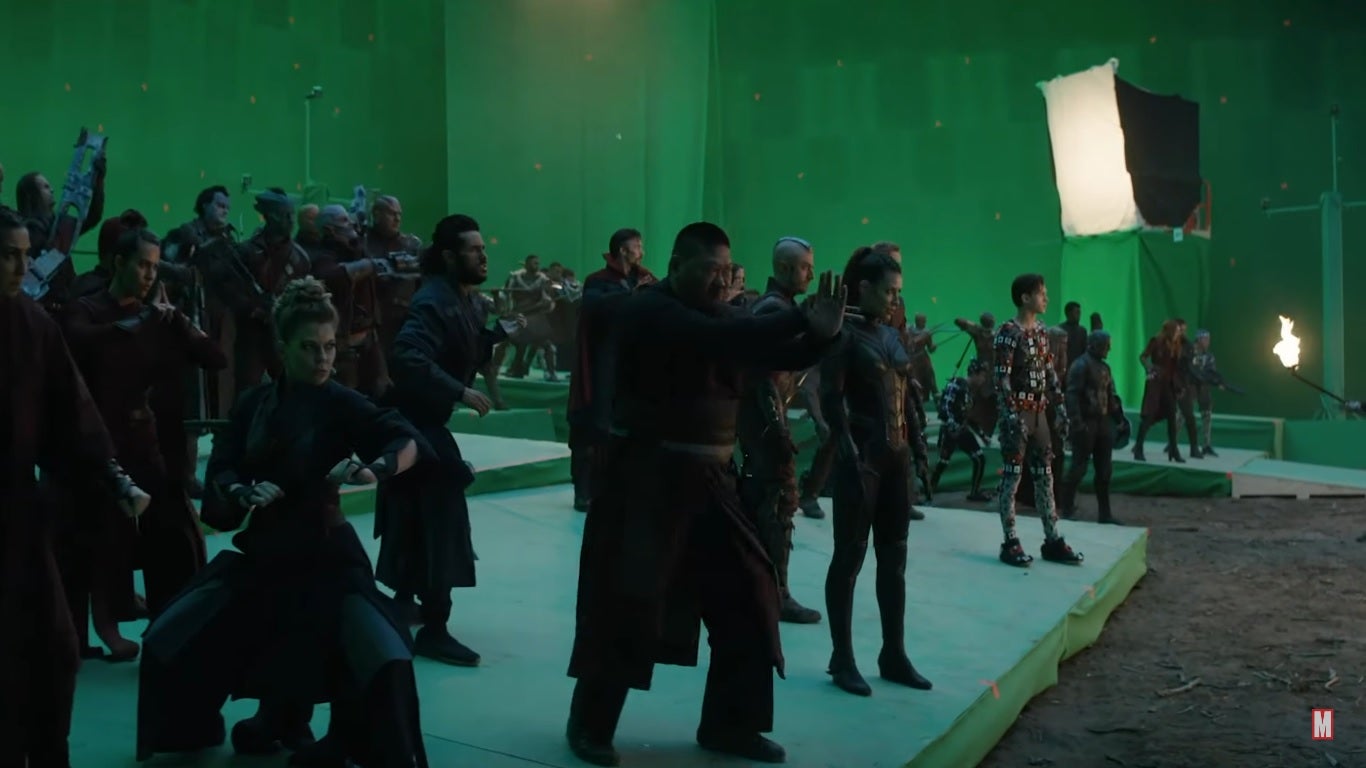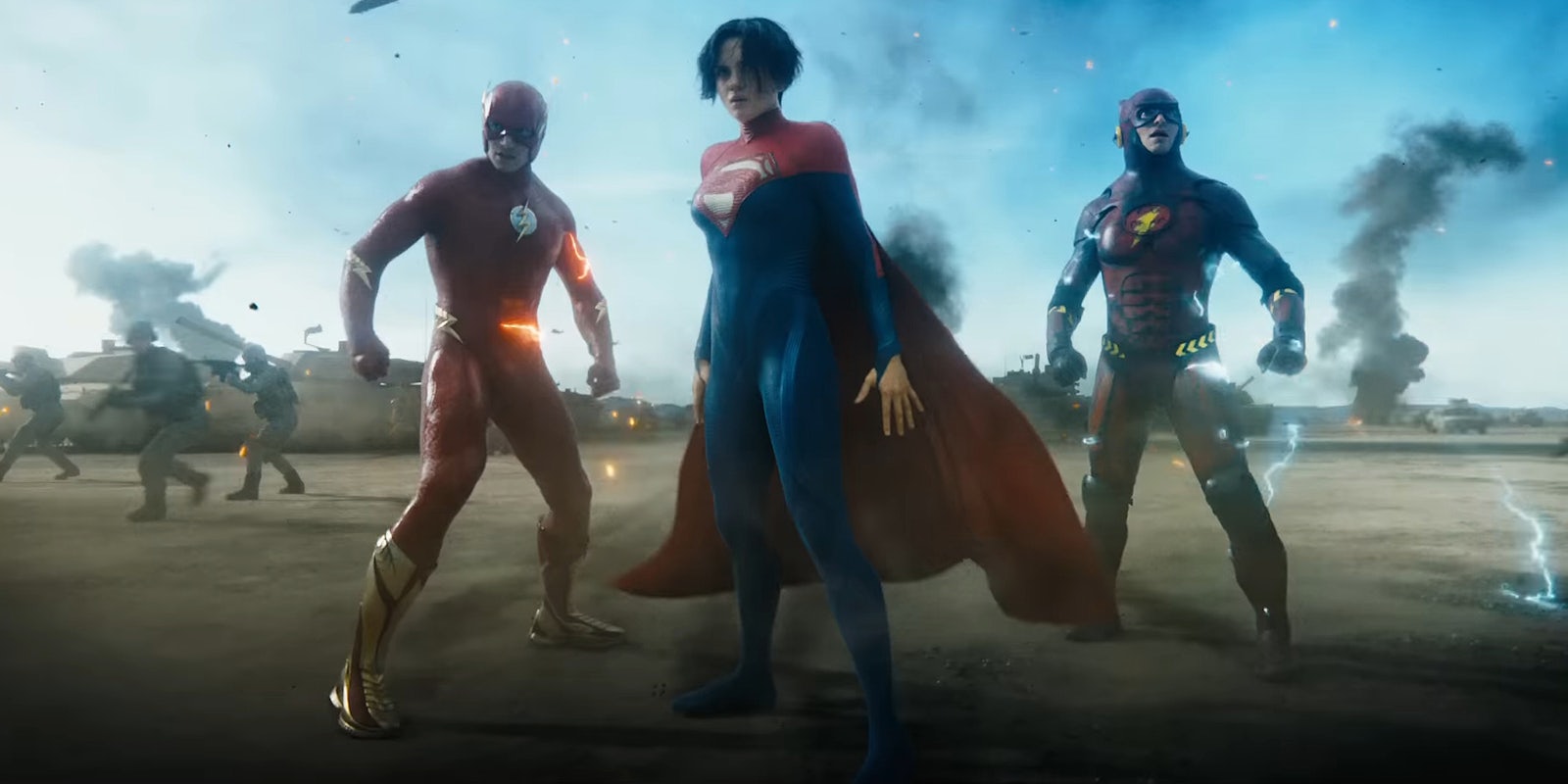If people are clowning on your film’s pivotal action scene before it’s even reached theaters, that’s not a good sign.
Despite Warner Bros.’ best efforts to generate hype, early reviews characterize The Flash as a distinctly average superhero flick: Entertaining, but with some very familiar flaws. Its final battle scene is a particular problem, with clips and screencaps already provoking a derisive response on social media.
Heavy on CGI and filmed in a blandly featureless setting, this scene reflects a style of action that’s ubiquitous among recent superhero blockbusters. But audiences, it seems, are finally losing interest.
Many of the criticisms aimed at The Flash‘s action focus on the quality of the CGI, drawing comparisons to the way video games transition from cut scenes into gameplay. But complaints about “bad CGI” really reflect several intersecting problems: Clumsy action that combines patchy VFX with incompetent choreography, boring production design, and a lack of spatial creativity. It takes a lot of money to look this fake.
This type of battle scene is a common problem because many superhero filmmakers have no real experience or aptitude for directing action. Captain America: Civil War (2016) is notorious for setting a crucial showdown in an airport parking lot, but worse examples can be found in movies that otherwise earned a positive reception, like Wonder Woman or Avengers: Endgame.
You can tell how much the tide has turned because Endgame’s final battle scene was well-received at the time. On a technical level, however, it has a lot in common with these much-derided Flash clips.
Both feature a murky aesthetic with indistinct light sources, and both take place in a flat, blank landscape, likely chosen to give VFX artists an easier job during post-production. Endgame‘s finale involved crowd scenes filmed on a greenscreen soundstage, with actors and CG creatures edited together onto a gloomy, grey-brown wasteland.

Without going into spoilers, The Flash‘s final battle is much the same. Recreating the supervillain Zod’s arrival in Man of Steel (2013), it involves Batman, Supergirl, and two versions of the Flash fighting Zod’s army of faceless Kryptonian commandoes. It takes place in a featureless desert.
In other words, in addition to looking bad in out-of-context clips (not necessarily a fair way to judge a movie!) The Flash‘s final battle is conceptually vacuous. It displays no understanding of how to make an action sequence exciting, whether through stylish choreography (John Wick), high-octane practical stunts (Mad Max: Fury Road; Mission Impossible), or sophisticated, VFX-heavy worldbuilding (Star Wars; Avatar).
Different though they are, those films all understand how to immerse their viewers in the action, combining a sense of peril with a keen eye for both physical space and aesthetic appeal. They make interesting use of the characters’ surroundings, shot in a way that draws the eye to moments of tension.
All of that stuff goes out the window when you’re filming on an empty soundstage, posing actors like figurines so they can be composited together in post-production.
In theory, The Flash could have been a showcase for some imaginative action, experimenting with the title character’s powers. Aside from in the opening scene, however, the Flash’s super-speed is rarely utilized in a visually interesting manner. And since his grand finale could easily slot into any mediocre superhero movie of the last decade, you can see why people are underwhelmed.



 (@InsaneLoke)
(@InsaneLoke) 